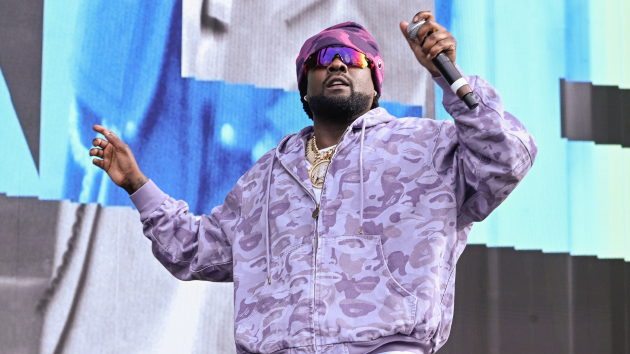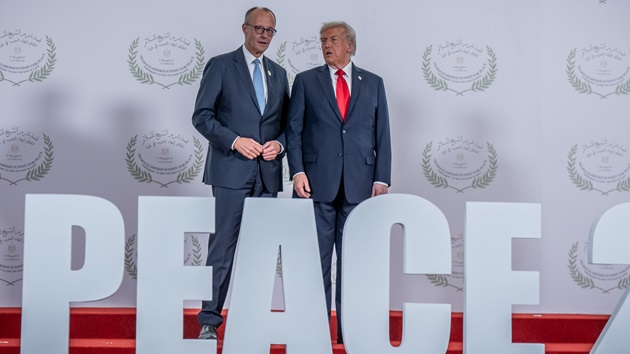How to pitch to Shohei Ohtani: After NLDS struggles, Brewers have a blueprint for success
Written by CBS SPORTS ALL RIGHTS RESERVED on October 13, 2025


The National League Championship Series gets underway Monday night with the Los Angeles Dodgers and Milwaukee Brewers embarking on a seven-game set to see who will represent the Senior Circuit in this year’s World Series. The Dodgers reached this point after knocking off the Cincinnati Reds and the Philadelphia Phillies; the Brewers after downing the Chicago Cubs.
One of the biggest challenges facing the Brewers is containing two-way superstar Shohei Ohtani. That’s no small task considering Ohtani is weeks away from claiming yet another MVP award following a regular season that saw him bat .282/.392/.622 (179 OPS+) with a career-high 55 home runs, 102 runs batted in, and 20 stolen bases. His contributions as the Dodgers’ DH and leadoff man alone were worth 6.6 Wins Above Replacement, according to Baseball Reference.
Yet, for as brilliant as Ohtani was throughout the year, he was largely a nonfactor against the Phillies. Indeed, across those four games, he went 1 for 18 with nine strikeouts and zero extra-base hits. He walked only twice, with one of those being of the intentional variety. The Phillies did not win the war against the Dodgers, but they did win the battle by hampering Ohtani.
Just how did the Phillies do it, and is there anything Brewers can copy for the NLCS? Let’s find out.
1. Were the results earned?
If you’ve read my analysis with regularity over the years, you’ve seen me stress the difference between a descriptive and a predictive statistic. On its own, Ohtani’s batting line during the NLDS is a descriptive statistic. It’s what happened: he recorded one hit in 18 at-bats. In terms of predictive power, though, the above information is too limited to draw conclusions from.
Watch baseball for any length of time, and you’ll see hot streaks that are fueled by squibbers and bleeders, as well as slumps that persist despite the batter squaring up ball after ball. Were you selecting one of those two to employ for the next year, you would almost always take the second player. Why? Because, despite the short-term results, you know that making authoritative contact on a regular basis tends to yield good results over the long haul. (It should but will not go without noting that I am generalizing here. There are good hitters who are weak-contact merchants.)
So, with that in mind: did Ohtani “earn” his bad results? Mostly yes.
| Split | Whiff rate% | Exit velocity | 10-30 degree% | xBA | xwOBA |
|---|---|---|---|---|---|
|
NLDS |
39.4% |
92.2 mph |
0% |
.100 |
.150 |
|
Regular season |
33.4% |
94.9 mph |
31.2% |
.257 |
.392 |
Ohtani, to his credit, still hit the ball hard when he connected. His average exit velocity during the NLDS was 92.2 mph, above the league average albeit below his seasonal norm (94.9 mph). Yet there were some clear reasons that he failed to generate offense during the NLDS.
For starters, Ohtani’s whiff rate swelled to 39.4%, which would’ve been the highest among qualifiers during the regular season … by more than four percentage points. Additionally, Ohtani may have made hard contact during the NLDS, but it wasn’t particularly good contact. By that I mean he was too prone to either beating the ball into the ground or hitting it up in the air.
To wit, more than 31% of Ohtani’s batted balls during the regular season were launched between 10 and 30 degrees — that being the ideal trajectory range for a batter. Do you want to guess how many of Ohtani’s nine batted balls during the NLDS were hit in that window? The answer is none. Comparatively, three of Ohtani’s batted balls had launch angles higher than 50 degrees, and another three had launch angles below minus-14 degrees.
TruMedia tracks “expected” numbers based solely on each batted ball’s exit velocity and launch angle. The measure is imperfect. It doesn’t take into account spray angle (i.e. to which field it was hit), ballpark, or anything else. Just exit velocity and launch angle. Anyway, Ohtani’s “expected” slash line from the NLDS was .100/.190/.181. This wasn’t a case of bad luck. He just didn’t play well.
2. How did Phillies pitch Ohtani?
Having established that Ohtani did indeed struggle during the NLDS, it’s only fair to ask: is there anything that the Brewers can borrow from the Phillies’ approach? I think the answer is “maybe.”
I noticed a few trends when I reviewed how the Phillies pitched to Ohtani. Foremost, they worked down in the zone a lot more than he’s accustomed to seeing. During the regular season, 59.5% of his pitches were located in the lower half of the strike zone. Against the Phillies? That percentage spiked to 74.6%. What’s more is that the Phillies were also more aggressive working him on the inside corner, placing seven more pitches there per 100 offerings than what he faced during the regular season.
One of the tricky aspects of analyzing how a team attacks a player is divining whether it’s because of a perceived strategic edge or simply because of their personnel; is it design or necessity? There was probably a little of both at play here.
The strategic element extended to who the Phillies used against Ohtani. Again, he received 20 plate appearances throughout the series. He faced a left-hander in 16 of those. In three of those four other trips to the dish, Ohtani faced closer Jhoan Duran, who may as well be a lefty given his career reverse splits. It’s clear that the Phillies wanted to possess the platoon advantage almost every time he batted.
As for the necessity part, consider who those lefties were: Cristopher Sánchez, Jesús Luzardo, Matt Strahm, and Tanner Banks. What do they usually throw when they’re facing a lefty batter? Take a look:
| Pitcher | Top pitch vs. LHB | Secondary pitch vs. LHB |
|---|---|---|
|
Sánchez |
Sinker |
Slider |
|
Luzardo |
Sweeper |
Sinker |
|
Strahm |
Slider |
Sinker |
|
Banks |
Sweeper |
Sinker |
As you can see, all four Phillies lefties throw a sinker and a slider variation as either their top or secondary pitch versus lefties. Where are most left-on-left sinkers located? Down and/or in, the exact areas where Ohtani was flooded during the series. Did the Phillies see something in the data or in Ohtani’s video that caused them to pursue that spot, or did they simply have their pitchers do what they do when they’re facing a left-handed batter? It almost doesn’t matter. It worked regardless.
The question, then, is can the Brewers replicate that approach — that is, spamming Ohtani with left-handed sinkerballers?
In my estimation, Milwaukee has the personnel to do it. The Brewers had three different left-handed pitchers who threw more than 50% sinkers to same-handed batters: Jared Koenig, Aaron Ashby, and Jose Quintana. (They also have Robert Gasser, who checked in around 30% sinkers.) During the NLDS, the Brewers started Freddy Peralta twice and Quinn Priester once, and filled in the gaps by deploying Ashby and another reliever as openers. It wouldn’t be much of a departure, then, if manager Pat Murphy and the front office formulated a gameplan where Ohtani is either facing Peralta, a high-leverage reliever like Abner Uribe or Trevor Megill, or one of those aforementioned lefties.
Of course, even if the Brewers could run the exact same playbook as the Phillies, there are no guarantees that it would work as well. Remember that bit earlier about descriptive and predictive statistics? You have to remember that the players can influence matters by making adjustments of their own. Ohtani himself played some role in his struggles. He was more aggressive than usual, and it’s clear that his timing was off based on some of his aforementioned measures. You needn’t take my word for it, either.
“I think a lot of it is driven by the left-handed pitching. Even with that, he wasn’t as bad in the regular season as he was in the postseason against those guys. Certainly whatever opponent we’re going to face, they’re going to put as many lefties on Shohei, but we’re hoping that he can do a little self-reflecting on that series and how aggressive he was outside of the strike zone and passive in the zone,” manager Dave Roberts told reporters Saturday.
“The at-bat quality needs to get better. Hopefully with the hitting guys, learning from that past series and getting better. We’re going to need him to be better.”
The team, Roberts said, is looking to Ohtani to “recalibrate,” much as he did before the 2024 NLCS.
“We’re not going to win the World Series with that sort of performance,” Roberts said.
Will Ohtani return to his usual form in the NLCS, or will the Brewers be able to keep him locked down? That question will go a long way in determining which team proceeds to the World Series.
The post How to pitch to Shohei Ohtani: After NLDS struggles, Brewers have a blueprint for success first appeared on OKC Sports Radio.





